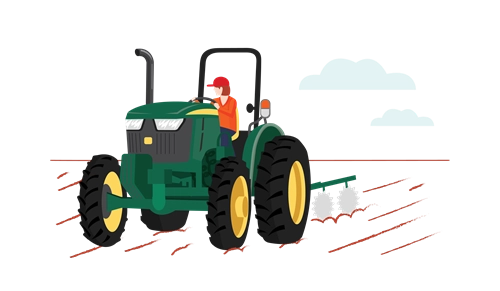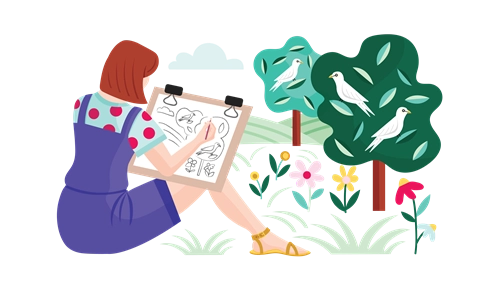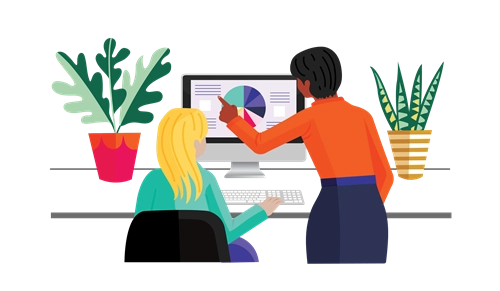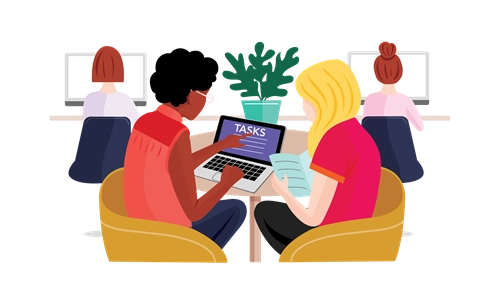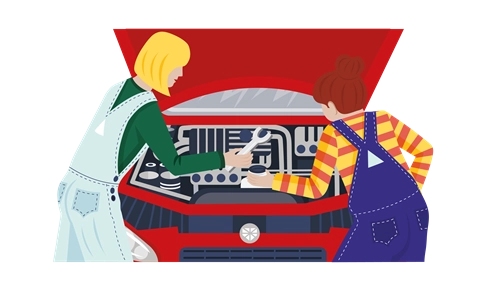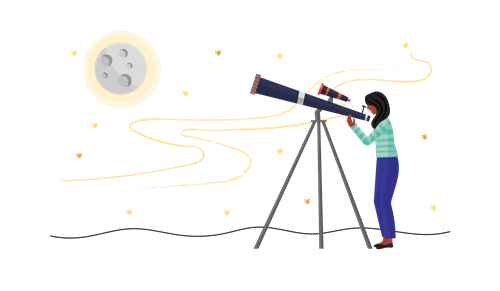References
This page is a depository of the references that can be found throughout The GiST.
References are sorted via the surname of the writer referenced, or in cases where no writer is referenced, via the report or resource title.
-
A
- Accenture. (2018). Girls in STEM. Retrieved from: https://www.accenture.com/t00010101T000000Z__w__/gb-en/_acnmedia/PDF-73/Accenture-Girls-in-STEM-Research-15-Mar-2018.pdf
- AMSI. (2019). Engaging more women and girls in mathematics and STEM fields: The international evidence. Retrieved from: https://amsi.org.au/publications/gender-report-20104
- Anaya, L. et al. (2017). 'Gender gaps in math performance, perceived mathematical ability and college STEM education: The role of parental occupation'. EDRE Working Paper No. 2017-21. Retrieved from: : http://www.uaedreform.org/downloads/2017/11/gender-gaps-in-math-performance-perceived-mathematical-ability-and-college-stem-education-the-role-of-parental-occupation.pdf
- Australian Academy of Science. (2019). Women in STEM decadal plan. Retrieved from: https://www.science.org.au/files/userfiles/support/reports-and-plans/2019/gender-diversity-stem/women-in-STEM-decadal-plan-final.pdf
-
B
- Baine, C. (2009). Engineers make a difference: Motivating students to pursue an engineering education. Springfield, OR. Bonamy Publishing.
- Baker, D. & Leary, R. (1995). ‘Letting girls speak out about science’. Journal of research in science teaching 32(1), 3–27. Retrieved from: http://www.weizmann.ac.il/st/blonder/sites/st.blonder/files/uploads/bat-shahar.pdf
- Boaler, J. (2014). Changing the Conversation about Girls and STEM. Stanford University. Retrieved from: https://bhi61nm2cr3mkdgk1dtaov18-wpengine.netdna-ssl.com/wp-content/uploads/Youcubed-STEM-white-house.pdf
- Brotman, J.S. & Moore, F.M. (2008). 'Girls and science: A review of four themes in the science education literature'. Journal of research in science teaching, 45(9), 971–1002
- Buck, G.A., Clark, V.L.P., Leslie‐Pelecky, D., Lu, Y., & Cerda‐Lizarraga, P. (2008). 'Examining the cognitive processes used by adolescent girls and women scientists in identifying science role models: A feminist approach'. Science education, 92(4), 688–707.
- Burke, R.J. (2007). Women and minorities in science, technology, engineering and mathematics: Upping the numbers. Northampton, MA: Edward Elgar Publishing
-
C
- Clewell, B.C. & Braddock, J. (2000). 'Influences on minority participation in mathematics, science and engineering'. In G. Campbell, Jr., R. Denes & C. Morrison (Eds). Access denied: Race, ethnicity, and the scientific enterprise. New York: Oxford University Press
- Cooper, R. (2019). Five ways teachers can encourage girls in STEM. [online] Retrieved from: https://www.monash.edu/education/teachspace/articles/five-ways-teachers-can-encourage-girls-in-stem
- Cooper, R. & Heaverlo, C. (2013) 'Problem solving and creativity and design: What influence do they have on girls’ interest in STEM subject areas?' American Journal of Engineering Education. Spring Special Edition 4(1)
- Wade-Leeuwen, B., Vovers, J. & Silk, M. (2018). Explainer: What’s the difference between STEM and STEAM? The Conversation. June 18 2018. Retrieved from: https://theconversation.com/explainer-whats-the-difference-between-stem-and-steam-95713
-
D
- Dasgupta, N. and S. Asgari (2004). 'Seeing is believing: Exposure to counterstereotypic women leaders and its effect on the malleability of automatic gender stereotyping'. Journal of Experimental Social Psychology. 40: p. 642–658.
- Dearing, E., Casey, B.M., Ganley, C.M., Tillinger, M., Laski, E., & Montecillo, C. (2012). 'Young girls’ arithmetic and spatial skills: The distal and proximal roles of family socioeconomics and home learning experiences'. Early Childhood Research Quarterly, 27, 458–470.
- Dubach. (2018). Study reveals patterns in STEM grades of girls versus boys, UNSW Newsroom
- Dweck, C.S. (1986). 'Motivational processes affecting learning'. American Psychologist, 41(10), 1040–1048.
- Dweck et al (2014). Academic Tenacity Mindsets and Skills that Promote Long-Term Learning
-
F
- The Foundation for Young Australians. (2017). The New Work Smarts: Thriving in the new work order. Retrieved from: https://www.fya.org.au/wp-content/uploads/2017/07/FYA_TheNewWorkSmarts_July2017.pdf
-
G
- The Girl Scout Research Institute. (2012). Generation STEM: What girls say about science, technology, engineering, and math. New York, NY: Girl Scouts of the USA. Retrieved from: https://www.ncgs.org/wp-content/uploads/2017/11/Generation-STEM-What-Girls-Say-about-Science-Technology-Engineering-and-Math.pdf
- Good, J.J., Woodzicka, J. and Wingfield, L. (2010). The effects of gender stereotypic and counter-stereotypic textbook images on science performance. Retrieved from: http://gap.hks.harvard.edu/effects-gender-stereotypic-and-counter-stereotypic-textbook-images-science-performance
-
H
- Hackling, M. (2015). 'Think piece: Preparing today’s children for the workplaces of tomorrow: The critical role of STEM education'. International journal of innovation in science and mathematics education, 23(3), pp.61–63. Retrieved from: https://openjournals.library.sydney.edu.au/index.php/CAL/article/viewFile/10334/10263
- Halpern, D., Aronson, J., Reimer, N., Simpkins, S., Star, J., and Wentzel, K. (2007). Encouraging girls in math and science (NCER 2007-2003). Washington, DC: National Center for Education Research, Institute of Education Sciences, U.S. Department of Education. Retrieved from: https://ies.ed.gov/ncer/
- Hughes, R. M., Nzekwe, B., & Molyneaux, K. J. (2013). 'The single sex debate for girls in science: A comparison between two informal science programs on middle school students’ STEM identity formation'. Research in science education, 43(5). doi:10.1007/s11165-012-9345-7
-
J
- Jones, M. G., Howe, A., & Rua, M.J. (2000) 'Gender differences in students’ experiences, interests and attitudes towards science and scientists'. Science Education 84(2), 180–192
-
K
- Kersey, A. J., Csumitta, K. D. & Cantlon, J. F. (2019). Gender similarities in the brain during mathematics development. npj Science of Learning, 4(19). https://doi.org/10.1038/s41539-019-0057-x
- Kumata, E. (2019). Quoted in Tony Wagner’s seven survival skills. [online] Retrieved from: http://www.tonywagner.com/7-survival-skills
-
M
- Marx, D.M. and J.S. Roman. (2002). 'Female role models: Protecting women’s math test performance'. Personality and Social Psychology Bulletin, 28: p. 1183–1193.
- Master, A., Cheryan, S. and Meltzoff, A. N. (2016). 'Computing whether she belongs: Stereotypes undermine girls’ interest and sense of belonging in computer science'. Journal of Educational Psychology. 103(3): p. 424–437. Retrieved from: http://ilabs.uw.edu/sites/default/files/16Master_Cheryan_Meltzoff_Computer%20Sci_Stereotypes_Belonging_JEP.pdf
- Mastercard. (2016). Parents are crucial influencers for girls pursuing STEM careers: Inaugural MasterCard study. Retrieved from: https://newsroom.mastercard.com/asia-pacific/press-releases/parents-are-crucial-influencers-for-girls-pursuing-stem-careers
- McIntyre, R.B., et al. (2005). 'A social impact trend in the effects of role models on alleviating women’s mathematics stereotype threat'. Current Research in Social Psychology. 10(9).
- Microsoft. (2017). Why Europe’s girls aren't studying STEM. Retrieved from: https://news.microsoft.com/europe/features/dont-european-girls-like-science-technology/
- Microsoft. (2018). Closing the STEM gap: Why STEM classes and careers still lack girls and what we can do about it. Retrieved from: https://query.prod.cms.rt.microsoft.com/cms/api/am/binary/RE1UMWz
- Microsoft. (2018). How role models are changing the face of STEM in Europe. Retrieved from: https://news.microsoft.com/europe/features/girls-in-stem-the-importance-of-role-models
- Miller, P.H., Blessing, J.S. & Schwartz, S. (2006). 'Gender differences in high-school students’ views about science'. International Journal of Science Education 28(4), 363–381
- Murphy, P., (2000). ‘Are gender differences in achievement avoidable?’ in Issues in science teaching
-
N
- Newall, C., Gonsalkorale, K., Walker, E., Forbes, G. A., Highfield, K., & Sweller, N. (2018). 'Science education: adult biases because of the child's gender and gender stereotypicality'. Contemporary Educational Psychology, 55, p. 30–41. DOI: 10.1016/j.cedpsych.2018.08.003
- Nosek, B.A., et al. (2009). 'National differences in gender-science stereotypes predict national sex differences in science and math achievement'. PNAS. 106(26): p. 10593–10597.
- Novotney, A. (2013). 'Despite what you've been told, you aren't 'left-brained' or 'right-brained''. The Guardian. 16 November 2013. Retrieved from: https://www.theguardian.com/commentisfree/2013/nov/16/left-right-brain-distinction-myth
-
O
- Office of the Chief Scientist. (2016). Busting Myths about Women in STEM. Occasional paper series, Issue 13. Canberra.
- Office of the Chief Scientist. (2016). Australia’s STEM Workforce: Science, technology, engineering and mathematics. Australian Government, Canberra. Retrieved from https://www.chiefscientist.gov.au/wp-content/uploads/Australias-STEM-workforce_full-report.pdf
- Office of the Chief Scientist. (2016). Women in STEM: A story of attrition. Australian Government, Canberra. Retrieved from: https://www.chiefscientist.gov.au/wp-content/uploads/OCS_Women_in_STEM_datasheet.pdf
-
P
- Pozniak, H. (2017). 'How to encourage women to apply for apprenticeships in STEM'. Telegraph, 13 October 2017. Retrieved from: https://www.telegraph.co.uk/education/stem-awards/innovation/attracting-women-to-stem-apprenticeships/
- PwC. (2015). A smart move. PricewaterhouseCoopers, p.14. Retrieved from: https://www.pwc.com.au/pdf/a-smart-move-pwc-stem-report-april-2015.pdf
- PwC (2017). The talent challenge: Harnessing the power of human skills in the machine age. Retrieved from: https://www.pwc.com/talentchallenge
- PwC (2018). Workforce of the future: The competing forces shaping 2030. Retrieved from: https://www.pwc.com/gx/en/services/people-organisation/publications/workforce-of-the-future.html
-
S
- Sorby, S. A. (2009). 'Educational research in developing 3-D spatial skills for engineering students'. International journal of science education, 31(3), 459–80.
- STEMNext. (2017). Case study Bay Area ecosystem.
-
T
- Thomson, S., Wernert, N., O'Grady, E. and Rodrigues, S. (2016). TIMSS 2015: A first look at Australia's results. Retrieved from: https://research.acer.edu.au/timss_2015/1
- TIMSS 2011 results quoted in: Office of the Chief Scientist. (2016). Busting myths about Women in STEM.
-
U
- UNESCO. (2022). Global Education Monitoring Report – Gender Report: Deepening the debate on those still left behind. (https://unesdoc.unesco.org/ark:/48223/pf0000381329/PDF/381329eng.pdf.multi)
-
V
- Vekiri, I. (2013). 'Information science instruction and changes in girls’ and boys’ expectancy and value beliefs: In search of gender-equitable pedagogical practices'. Computers & Education, 64, 104–115.
-
W
- Watt, H., Eccles, J. & Durik, A. (2006). 'The leaky mathematics pipeline for girls: A motivational analysis of high school enrolments in Australia and the USA'. Equal Opportunities International, 25(8), pp. 642–659.


